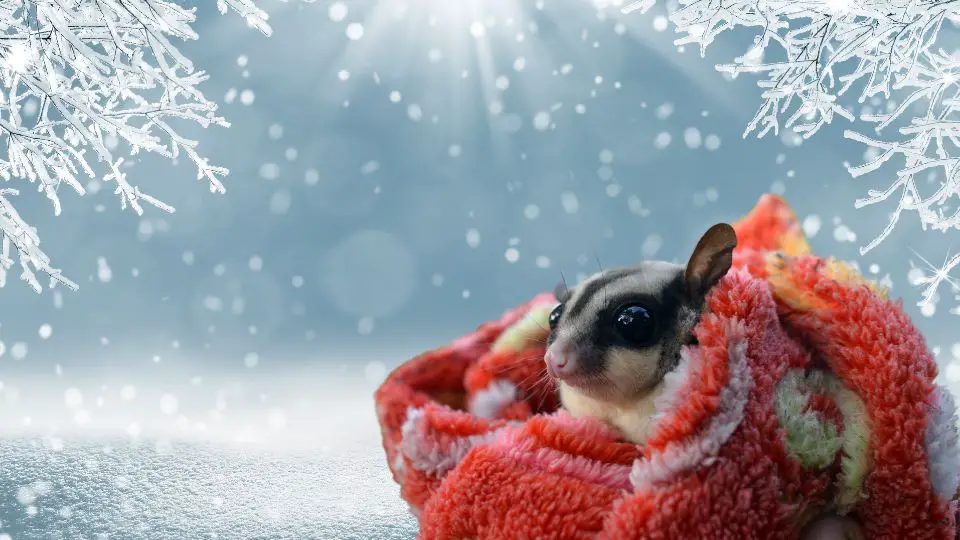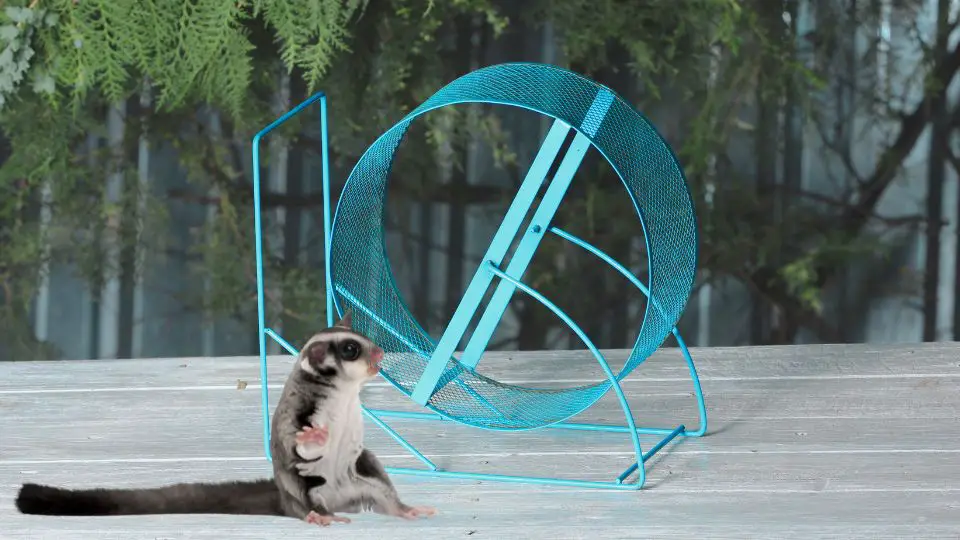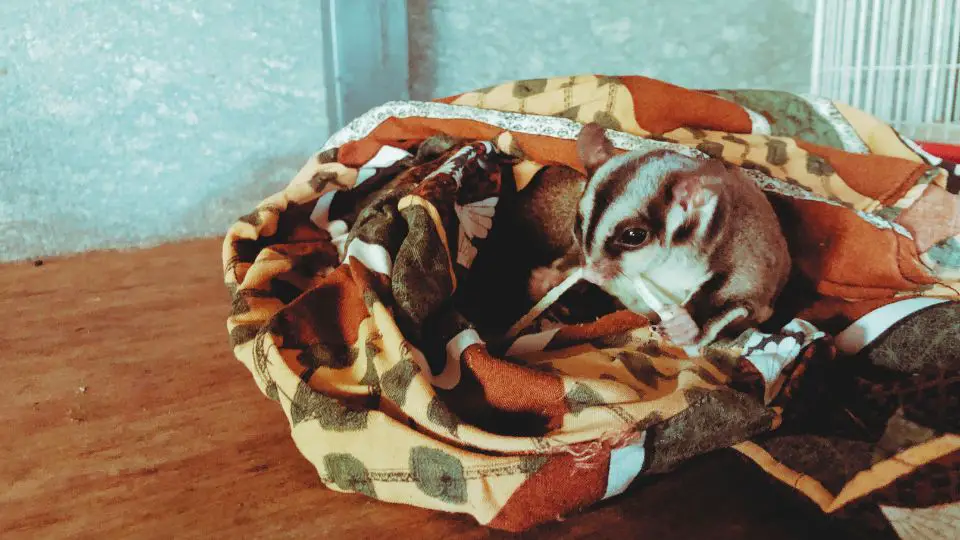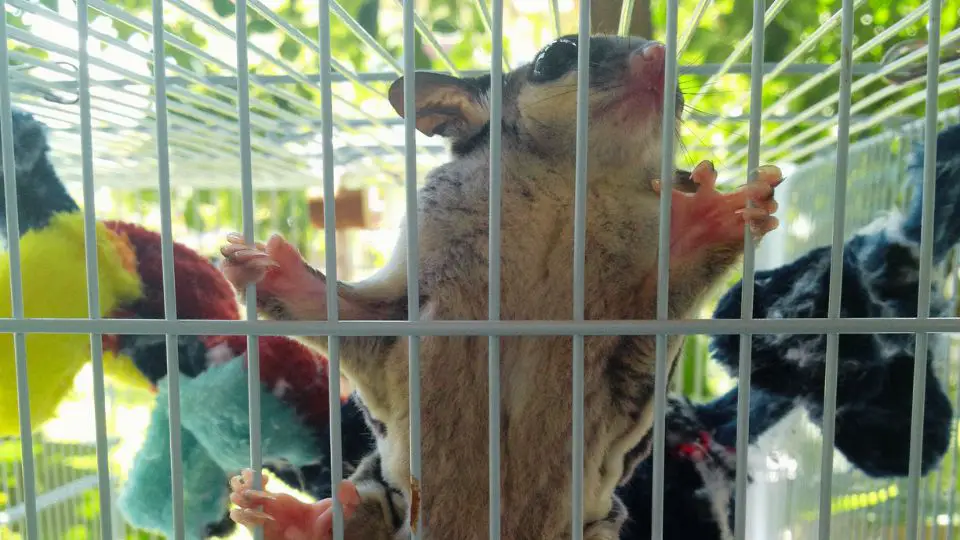Keeping a sugar glider warm in the winter can be tricky. Gliders are small marsupials native to Australia, and their bodies are not well-equipped to deal with cold weather. In the wild, sugar gliders hibernate during the winter months to stay warm, but captive sugar gliders do not usually have this option.
There are a few things you can do to help your sugar glider stay warm during the winter months. First, make sure your sugar glider has a warm, comfortable place to sleep. A nesting box filled with soft bedding material like fleece or cotton will help your glider stay warm at night. You can also provide your sugar glider with a “sleeping bag” made out of fleece or another soft material.
In this article, we offer some ideas on how can you keep your sugar glider warm in the winter.
Can sugar gliders stay in cold?
No, sugar gliders do not do well in cold weather. If the temperature outside is below 60 degrees Fahrenheit (15 degrees Celsius), your sugar glider should be brought indoors.
In colder weather, make sure to provide a warm, cozy hideaway for them to retreat to. Additionally, you can purchase a small heat lamp to place it near the cage in order to help keep them warm.
Proper diet and hydration are also important for sugar gliders in colder weather, as they can easily become dehydrated and malnourished. Be sure to offer them plenty of water and fresh fruits and vegetables.
If a sugar glider gets cold, they may become lethargic and stop eating. If this happens, you should immediately warm the room their cage is in and offer them warm water or sugar water to drink. If their symptoms persist, you should take them to the vet as they may be suffering from hypothermia.
Methods of keeping sugar glider warm in winter
During winter, there are a few methods you can use to make sure your sugar glider stays warm:
Provide a warm hideaway
If you must take your sugar glider outside, make sure to provide them with a warm, cozy hideaway to retreat to when they get cold.
It can be something home-made, as a little bird cage wrapped with a piece of clothing, or you can purchase a small heated “glider bag” or “sleeping pouch” made specifically for sugar gliders.
Nesting boxes are a good idea too, as they provide a small, enclosed space for your glider to sleep in. You can make a nesting box out of a plastic container with a lid, or purchase one online or from a pet store.
Fill the nesting box with soft bedding material like fleece, cotton, or shredded paper. Make sure the bedding material is clean and free of any chemicals or perfumes.
Use a heat lamp
You can also purchase a small heat lamp to place near their cage to help keep them warm. Just be sure to closely monitor the temperature to make sure it doesn’t get too hot.
When using any kind of room heater, keep an eye of the little creature as they can always go in the other extreme, while too hot can have other dangerous consequences.
In all our articles, we don’t recommend using a heat rock as it can burn your sugar glider.
Proper diet and hydration
Proper diet and hydration are also important for sugar gliders in colder weather, as they can easily become dehydrated and malnourished. Be sure to offer them plenty of water and fresh fruits and vegetables.
Monitor for signs of hypothermia
If a sugar glider gets cold, they may become lethargic and stop eating. If this happens, you should immediately warm the room their cage is in and offer them warm water or sugar water to drink. If their symptoms persist, you should take them to the vet as they may be suffering from hypothermia.
Signs of hypothermia include:
- Lethargy
- Loss of appetite
- Weakness
- Shivering
- Slow, shallow breathing
Don’t let them outside
Never let the little babies outside when it’s winter. Keep in mind that they are escape artists, so make sure they don’t escape by accident too. Be careful that all windows and doors are closed if you decide to let the glider outside the cage for a little while.
Wrap up
To sum up, sugar gliders do not do well in cold weather and should be brought indoors if the temperature outside is below 60 degrees Fahrenheit.
If you have a sugar glider during winter, make sure to provide a warm, cozy hideaway for them to retreat to and offer them plenty of water and fresh fruits and vegetables.
Additionally, you can purchase a small ceramic heater to place in their cage to help keep them warm. If a sugar glider gets cold, they may become lethargic and stop eating.
If this happens, you should immediately warm the room their cage is in and offer them warm water or sugar water to drink. If their symptoms persist, you should take them to the vet as they may be suffering from hypothermia.







